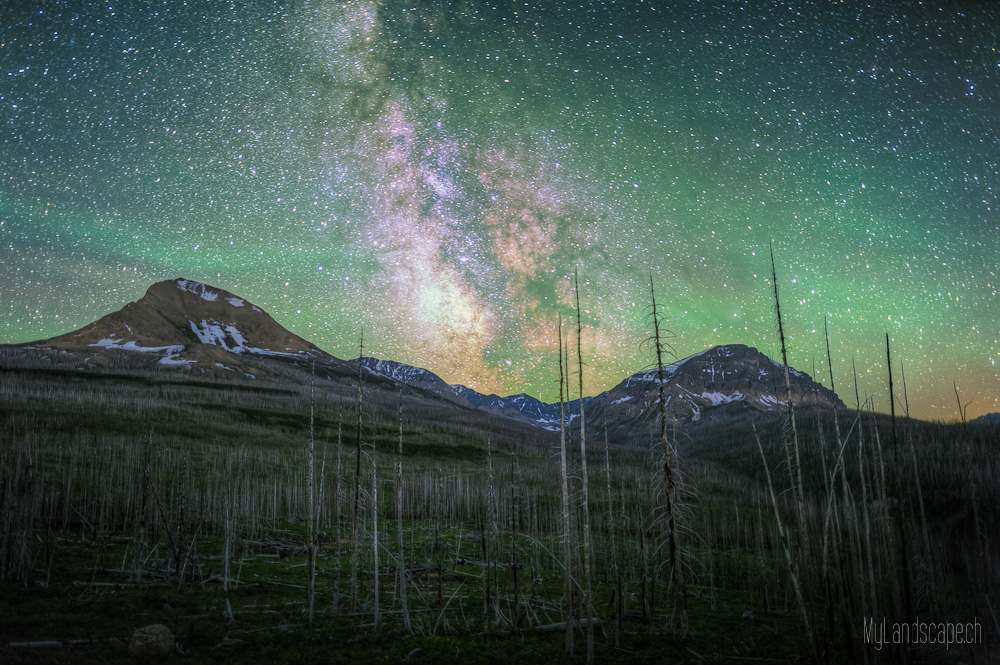About a month ago I took this mysterious image near Glacier national park (48°41'58.97" N / 113°24'26.21" W):
I don't know what this green stuff in the sky is. Can it be polar lights? For me this seems to be very unlikely south of 49° north, looking in direction south. But have a look by yourself at the timelapse I created from this scene: http://www.mylandscape.ch/DSC_5264.avi
I didn't see something with my naked eye, but I spent most of the exposure time of in total 800s in the car, speaking with my wife. I was surprised when I saw the shots on my camera. When looking at the timelapse it looks like radioactive cirrostratus clouds, but I don't think that's it. But I cannot believe it's polar light. The motion is not typical and it would be very far south too.
Has anyone an explanation?
Green cirrostratus at night?
Green cirrostratus at night?
Last edited by dmkdmkdmk on Fri Aug 05, 2011 10:28 am, edited 1 time in total.
Re: Green cirrostratus at night?
Yeah, that's it! Thank you Art! Finally I got a solution  .
.
Re: Green cirrostratus at night?
Another question rose up: What are those objects on the sky, seen on the timelapse I posted above? They are moving with about 3.5° per 25s. And the longest streak is visible on 4 images which makes about 14° of motion and 100s of activity.
First I thought those must be airplanes. But the lack of a blinking light and the short visibility (the do not fly to the horizon or to the image border) did not make this explanation very likely. Second thought was an Iridium Flare. But they are known to last only about 20s. And they should have a brighter point somewhere in between. Third thought: Common satellites. But why are the streaks stopping so suddenly? Fourth thought: slow meteorites.
Does anyone else have an explanation?
First I thought those must be airplanes. But the lack of a blinking light and the short visibility (the do not fly to the horizon or to the image border) did not make this explanation very likely. Second thought was an Iridium Flare. But they are known to last only about 20s. And they should have a brighter point somewhere in between. Third thought: Common satellites. But why are the streaks stopping so suddenly? Fourth thought: slow meteorites.
Does anyone else have an explanation?
